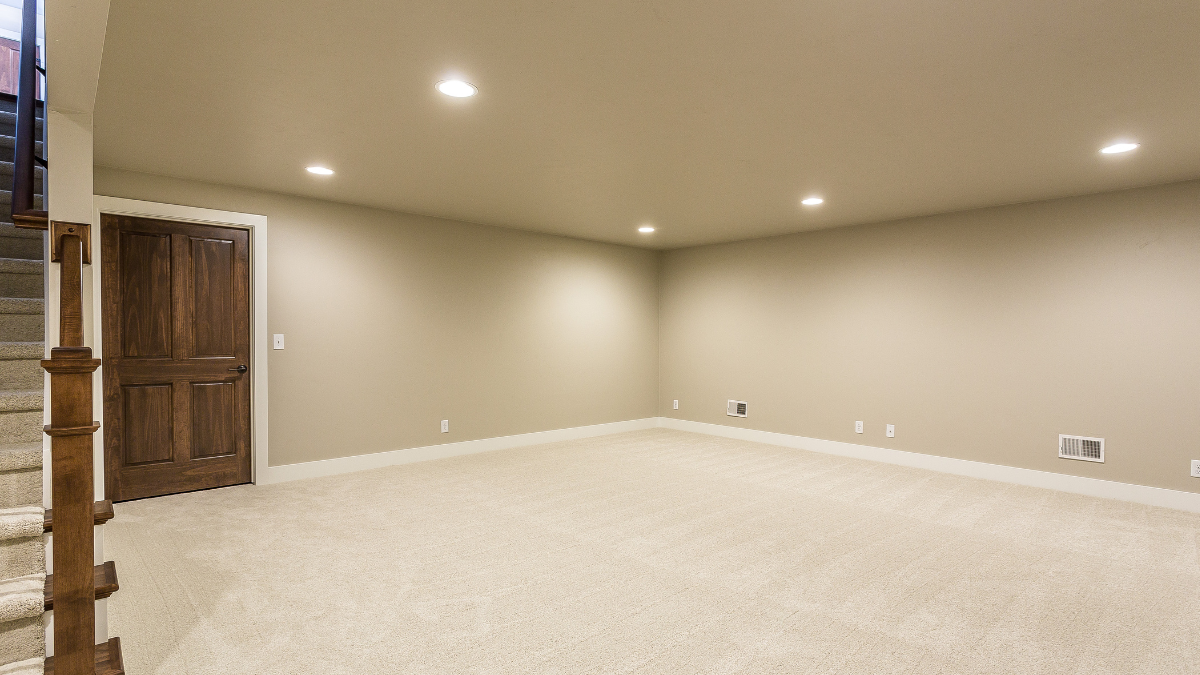Winter can turn basements into chilly, uninviting spaces. If your basement is uncomfortably cold, you’re not alone. Many people struggle with keeping their basements warm, especially when the floors get downright icy. The good news? There are plenty of ways to make your basement cozy without breaking the bank! Let’s dive into a few affordable basement heating solutions that’ll help you keep those floors and the entire space toasty all winter.
Why Are Basements So Cold?
Before jumping into solutions, it’s good to understand why basements get so cold in the first place. Basements are often below ground level, so they naturally retain cold air more than the rest of your house. Concrete floors, stone walls, and limited windows all contribute to that chilly environment, making it feel colder than the upper floors. Plus, any gaps or cracks in the foundation can let cold drafts sneak in, dropping the temperature even further.
Solution #1: Underfloor Heating for Basements
If you want to keep your basement warm from the ground up, underfloor heating for basements is one of the best choices. This system, also known as radiant floor heating, works by warming the floor surface directly. It’s installed under your basement flooring (whether it’s tile, wood, or laminate) and uses either electric coils or hot water pipes to spread warmth evenly across the floor.
Benefits of Underfloor Heating
- Even Heating: Unlike regular heaters, which only heat the air, underfloor heating warms up the entire floor, making the space feel cozy from bottom to top.
- Energy Efficient: Since heat rises, underfloor heating keeps the warmth closer to the ground, which means you use less energy compared to other heating methods.
- Space-Saving: No need for bulky heaters; the system is hidden under the floor, giving you more space for furniture or decor.
Underfloor heating is ideal for basements that are used regularly, like a home gym, living area, or playroom. It’s a permanent solution that will keep your basement warm for years to come, though it might be more of an investment upfront.
Solution #2: Add Carpets or Rugs
Sometimes, a simple fix can make a big difference. One easy and cost-effective way to prevent a cold basement floor is by adding area rugs or wall-to-wall carpeting. Not only do carpets help insulate the floor, but they also add a bit of coziness and style to the room.
If you already have carpet down, try layering it with a thicker area rug to trap even more warmth. This solution is great if you want a quick, affordable fix without installing any new heating systems. And if you’re renting, rugs are especially convenient since they’re easy to put down and remove when needed.
Solution #3: Seal Up Drafts and Cracks
Cold air can find its way through the tiniest gaps, especially in basements. Go around the basement walls, windows, and doors, and look for cracks or spaces where air could be seeping in. Use caulk or weatherstripping to seal these spots. This is one of the simplest ways to stop heat from escaping and keep the basement warmer.
While it may not directly heat the room, sealing cracks can make your other heating solutions work more effectively. It’s a quick job that you can do over a weekend, and it’ll help reduce cold drafts in the basement.
Solution #4: Use Space Heaters
If you’re looking for an affordable basement heating solution, space heaters are a fantastic choice. They’re inexpensive, portable, and come in a range of options, from ceramic heaters to oil-filled radiators. Modern space heaters often come with safety features, like auto-shutoff and thermostat controls, so you can keep your basement warm without worrying about overheating.
When using a space heater, it’s best to position it in a spot where it can easily circulate warmth throughout the room. Just remember to follow all safety instructions and avoid placing them near curtains, furniture, or other flammable materials.
Solution #5: Insulate the Basement Walls
Adding insulation to your basement walls can make a huge difference in retaining warmth. Proper insulation not only keeps your basement warm in the winter, but it also helps keep it cool in the summer, making it a comfortable space year-round.
There are several types of insulation to consider, such as foam board or fiberglass. Each option has its pros and cons, so it’s worth talking to a professional to see which would work best for your basement setup. This solution can be a bit more expensive, but it’s an investment that pays off over time by improving energy efficiency and comfort.
Solution #6: Install Electric Baseboard Heaters
If you’re looking for the best heating for cold basements, consider electric baseboard heaters. These heaters are mounted along the baseboards and are ideal for basements since they don’t take up much space. They heat up quickly and can be controlled room by room, giving you flexibility with your energy use.
Baseboard heaters work quietly and distribute heat evenly. They’re a solid option if you’re remodeling your basement or want a fixed heating system that’s still affordable and relatively easy to install.
Solution #7: Consider a Dehumidifier
It might sound counterintuitive, but a dehumidifier can actually help warm up your basement. Cold basements often feel even colder due to high humidity levels. When the air is damp, it feels cooler, so by removing excess moisture with a dehumidifier, you can make the space feel warmer.
While a dehumidifier doesn’t directly heat the room, it helps create a more comfortable environment by balancing the humidity levels. Plus, it’s a great tool for preventing mold and mildew, which is common in damp basement areas.
Solution #8: Cover Windows with Insulated Curtains
If your basement has windows, they could be letting in cold drafts. Insulated curtains or window coverings help trap heat and prevent chilly air from coming through. This is an inexpensive and easy way to keep the basement warmer without any significant installation or equipment.
In addition to covering windows, you might consider adding a layer of window film for extra insulation. This combination of insulated curtains and window film can go a long way in keeping out the cold.
Wrapping Up: Choose What Works Best for You
There’s no one-size-fits-all solution when it comes to how to warm a basement. Depending on your budget, lifestyle, and the layout of your basement, you might prefer one method over another. Underfloor heating for basements is a long-term, effective solution if you’re ready to invest. For more affordable options, consider using space heaters, sealing drafts, and adding rugs to create a cozy space without a major renovation.
With a bit of effort, you can turn your chilly basement into a warm and welcoming area to enjoy throughout the winter. Don’t let the cold hold you back from using your basement to its full potential!




